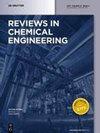An insight review on formation damage induced by drilling fluids
IF 6.6
3区 工程技术
Q1 ENGINEERING, CHEMICAL
引用次数: 4
Abstract
Abstract Formation damage is an essential part of drilling and production evaluation, which has a significant effect on well productivity and economics. Drilling fluids are significant sources of formation damage by different mechanisms. This article reviews the research works published during the past 30 years on formation damage associated with drilling fluids, including mechanical damage, chemical damage, and interaction with reservoir rock and fluids. Different filtration techniques, fines migration, and invasion models are discussed based on past studies and recent advancements. Laboratory experiments, methodology, and various aspects of evaluation are considered for further study. Despite presenting different authors’ views and experiences in this area, there is no integrated approach to evaluate formation damage caused by drilling fluids. Finally, the authors analyze the knowledge gap and conclude that a methodology must be designed to improve drilling fluids to prevent formation damage. Recent advances in the area of nanotechnology show promising alternatives for new methods to prevent formation damage.钻井液致地层损害研究进展
地层损害是钻井和生产评价的重要组成部分,对油井产能和经济效益有重要影响。钻井液是造成地层损害的重要原因。本文综述了近30年来发表的与钻井液有关的地层损害研究成果,包括机械损害、化学损害以及与储层岩石和流体的相互作用。根据过去的研究和最新进展,讨论了不同的过滤技术、细粒迁移和入侵模型。实验室实验,方法和评价的各个方面被认为是进一步研究。尽管在这一领域提出了不同的观点和经验,但目前还没有一种综合的方法来评估钻井液对地层的损害。最后,作者分析了知识差距,并得出结论,必须设计一种方法来改进钻井液,以防止地层损害。纳米技术领域的最新进展为防止地层损害的新方法提供了有希望的替代方案。
本文章由计算机程序翻译,如有差异,请以英文原文为准。
求助全文
约1分钟内获得全文
求助全文
来源期刊

Reviews in Chemical Engineering
工程技术-工程:化工
CiteScore
12.30
自引率
0.00%
发文量
37
审稿时长
6 months
期刊介绍:
Reviews in Chemical Engineering publishes authoritative review articles on all aspects of the broad field of chemical engineering and applied chemistry. Its aim is to develop new insights and understanding and to promote interest and research activity in chemical engineering, as well as the application of new developments in these areas. The bimonthly journal publishes peer-reviewed articles by leading chemical engineers, applied scientists and mathematicians. The broad interest today in solutions through chemistry to some of the world’s most challenging problems ensures that Reviews in Chemical Engineering will play a significant role in the growth of the field as a whole.
 求助内容:
求助内容: 应助结果提醒方式:
应助结果提醒方式:


